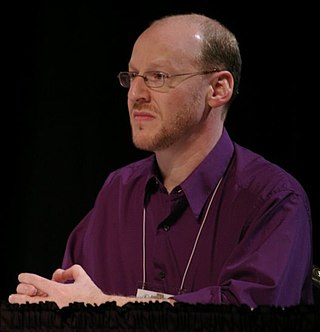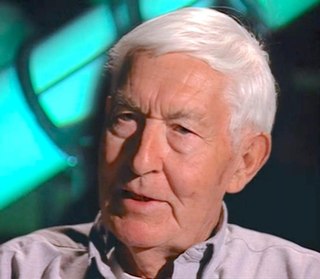Astrology is a range of divinatory practices, recognized as pseudoscientific since the 18th century, that propose that information about human affairs and terrestrial events may be discerned by studying the apparent positions of celestial objects. Different cultures have employed forms of astrology since at least the 2nd millennium BCE, these practices having originated in calendrical systems used to predict seasonal shifts and to interpret celestial cycles as signs of divine communications. Most, if not all, cultures have attached importance to what they observed in the sky, and some—such as the Hindus, Chinese, and the Maya—developed elaborate systems for predicting terrestrial events from celestial observations. Western astrology, one of the oldest astrological systems still in use, can trace its roots to 19th–17th century BCE Mesopotamia, from where it spread to Ancient Greece, Rome, the Islamic world, and eventually Central and Western Europe. Contemporary Western astrology is often associated with systems of horoscopes that purport to explain aspects of a person's personality and predict significant events in their lives based on the positions of celestial objects; the majority of professional astrologers rely on such systems.

The zodiac is a belt-shaped region of the sky that extends approximately 8° north and south of the ecliptic, the apparent path of the Sun across the celestial sphere over the course of the year. Also within this zodiac belt appear the Moon and the brightest planets, along their orbital planes. The zodiac is divided along the ecliptic into 12 equal parts ("signs"), each occupying 30° of celestial longitude. These signs roughly correspond to the astronomical constellations with the following modern names: Aries, Taurus, Gemini, Cancer, Leo, Virgo, Libra, Scorpio, Sagittarius, Capricorn, Aquarius, and Pisces.

Moon landing conspiracy theories claim that some or all elements of the Apollo program and the associated Moon landings were hoaxes staged by NASA, possibly with the aid of other organizations. The most notable claim of these conspiracy theories is that the six crewed landings (1969–1972) were faked and that twelve Apollo astronauts did not actually land on the Moon. Various groups and individuals have made claims since the mid-1970s that NASA and others knowingly misled the public into believing the landings happened, by manufacturing, tampering with, or destroying evidence including photos, telemetry tapes, radio and TV transmissions, and Moon rock samples.
Hindu astrology, also called Indian astrology, Jyotisha and, more recently, Vedic astrology, is the traditional Hindu system of astrology. It is one of the six auxiliary disciplines in Hinduism that is connected with the study of the Vedas.

Medical astrology or astrological medicine is an ancient applied branch of astrology based mostly on melothesia, the association of various parts of the body, diseases, and drugs with the nature of the sun, moon, planets, and the twelve astrological signs. The underlying basis for medical astrology is considered to be a pseudoscience as there is no scientific basis for its core beliefs.
A debunker is a person or organization that exposes or discredits claims believed to be false, exaggerated, or pretentious. The term is often associated with skeptical investigation of controversial topics such as UFOs, claimed paranormal phenomena, cryptids, conspiracy theories, alternative medicine, religion, exploratory or fringe areas of scientific, or pseudoscientific research.

Bart Winfield Sibrel is an American conspiracy theorist who has written, produced, and directed films arguing that the Apollo Moon landings between 1969 and 1972 were staged by NASA under the control of the CIA. He has created four independent films promoting the ideas, with the first having been the film A Funny Thing Happened on the Way to the Moon (2001).

Philip Cary Plait, also known as The Bad Astronomer, is an American astronomer, skeptic, and popular science blogger. Plait has worked as part of the Hubble Space Telescope team, images and spectra of astronomical objects, as well as engaging in public outreach advocacy for NASA missions. He has written three books, Bad Astronomy, Death from the Skies, and Under Alien Skies. He has also appeared in several science documentaries, including How the Universe Works on the Discovery Channel. From August 2008 through 2009, he served as president of the James Randi Educational Foundation. Additionally, he wrote and hosted episodes of Crash Course Astronomy, which aired its last episode in 2016.
Astrology and astronomy were archaically treated together, but gradually distinguished through the Late Middle Ages into the Age of Reason. Developments in 17th century philosophy resulted in astrology and astronomy operating as independent pursuits by the 18th century.

Bill Kaysing was an American author and conspiracy theorist who claimed that the Apollo Moon landings between 1969 and 1972 were hoaxes.
Identifying unidentified flying objects (UFOs) is a difficult task due to the normally poor quality of the evidence provided by those who report sighting the unknown object. Observations and subsequent reporting are often made by those untrained in astronomy, atmospheric phenomena, aeronautics, physics, and perception. Nevertheless, most officially investigated UFO sightings, such as from the U.S. Air Force's Project Blue Book, have been identified as being due to honest misidentifications of natural phenomena, aircraft, or other prosaic explanations. In early U.S. Air Force attempts to explain UFO sightings, unexplained sightings routinely numbered over one in five reports. However, in early 1953, right after the CIA's Robertson Panel, percentages of unexplained sightings dropped precipitously, usually being only a few percent in any given year. When Project Blue Book closed down in 1970, only 6% of all cases were classified as being truly unidentified.
Christopher Wanjek is a health and science journalist and author based in the United States.

Scientific misconceptions are commonly held beliefs about science that have no basis in actual scientific fact. Scientific misconceptions can also refer to preconceived notions based on religious and/or cultural influences. Many scientific misconceptions occur because of faulty teaching styles and the sometimes distancing nature of true scientific texts. Because students' prior knowledge and misconceptions are important factors for learning science, science teachers should be able to identify and address these conceptions.
Australian Aboriginal astronomy has been passed down orally, through ceremonies, and in their artwork of many kinds. The astronomical systems passed down thus show a depth of understanding of the movement of celestial objects which allowed them to use them as a practical means for creating calendars and for navigating across the continent and waters of Australia. There is a diversity of astronomical traditions in Australia, each with its own particular expression of cosmology. However, there appear to be common themes and systems between the groups. Due to the long history of Australian Aboriginal astronomy, the Aboriginal peoples have been described as "world's first astronomers" on several occasions.

Andrew Fraknoi is a retired professor of astronomy recognized for his lifetime of work using everyday language to make astronomy more accessible and popular for both students and the general public. In 2017 Fraknoi retired from his position as Chair of the Department of Astronomy at Foothill College. In retirement he continues to teach through the Fromm Institute for Lifelong Learning and the Osher Lifelong Learning Institute at San Francisco State University, to give public lectures, and to add to his body of written work. He is the recipient of numerous awards and honors in his field.

Death from the Skies!: These Are The Ways The World Will End is a book by the American astronomer Phil Plait, also known as "the Bad Astronomer". The book was published in 2008 and explores the various ways in which the human race could be rendered extinct by astronomical phenomena.

David Morrison is an American astronomer, a senior scientist at the Solar System Exploration Research Virtual Institute, at NASA Ames Research Center in Mountain View, California. Morrison is the former director of the Carl Sagan Center for Study of Life in the Universe at the SETI Institute and of the NASA Lunar Science Institute. He is the past Director of Space at NASA Ames. Morrison is credited as a founder of the multi-disciplinary field of astrobiology. Morrison is best known for his work in risk assessment of near Earth objects such as asteroids and comets. Asteroid 2410 Morrison was named in his honor. Morrison is also known for his "Ask an Astrobiologist" series on NASA's website where he provides answers to questions submitted by the public. He has published 12 books and over 150 papers primarily on planetary science, astrobiology and near Earth objects.

The Young Australian Skeptics (YAS) is an Australian skeptical organisation whose primary focus is its collaborative blog, which attempts to address topics central to science, critical thinking and scientific skepticism. The group has published a Skeptical Blog Anthology Book reviewed in Scientific American, and has been represented in national broadcast media in Australia and North America, skeptically addressing conspiracy theories, as well as discussing topics specific to young members of the skeptical movement.
Astrology consists of a number of belief systems that hold that there is a relationship between astronomical phenomena and events or descriptions of personality in the human world. Astrology has been rejected by the scientific community as having no explanatory power for describing the universe. Scientific testing has found no evidence to support the premises or purported effects outlined in astrological traditions.
The Wiley Bad Science Series is a series of books by John Wiley & Sons Publishing about scientific misconceptions.










